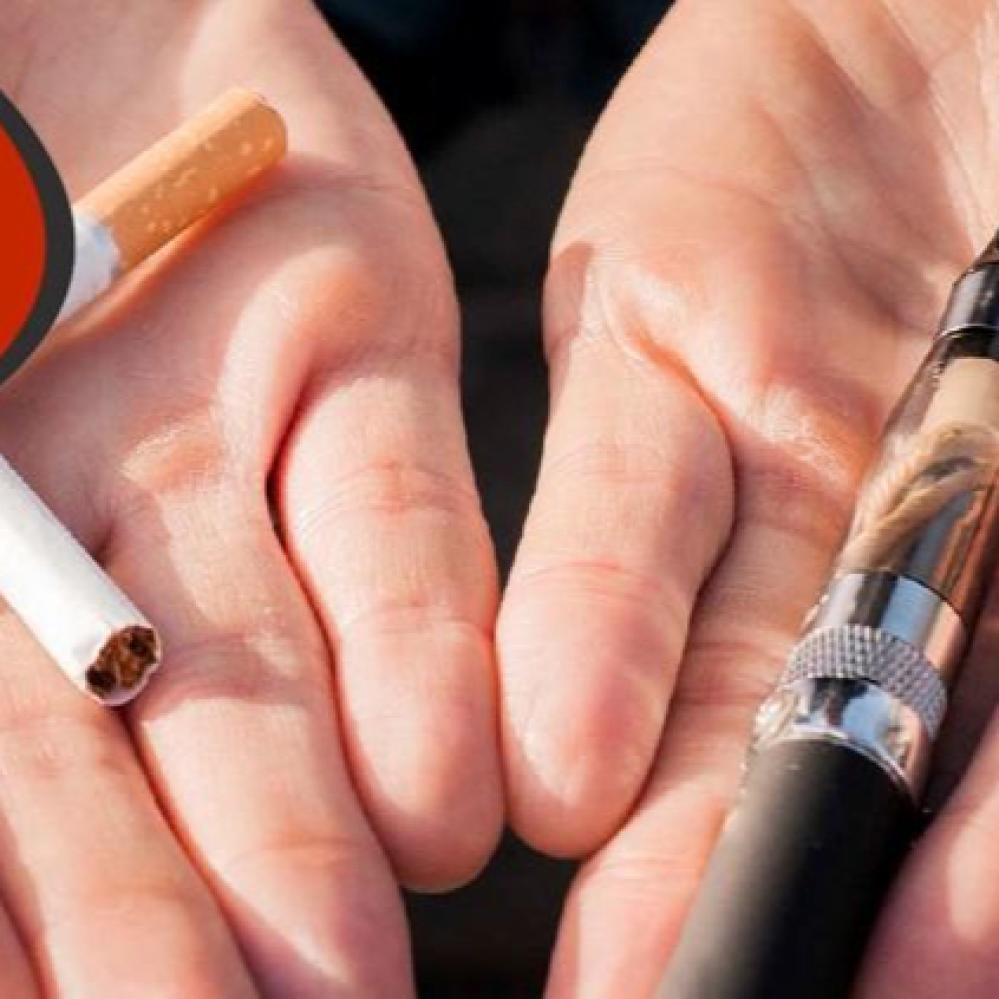
 The Battle of the Smokes: Cigarettes vs. Vapes
The Battle of the Smokes: Cigarettes vs. Vapes
As society advances and health awareness grows, the conversation around smoking has dramatically evolved. One of the biggest shifts has been the emergence of vaping as a preferred alternative to traditional cigarettes. It is essential to understand how these two methods of nicotine delivery differ on multiple levels, from their composition, delivery systems, and overall health implications.
Traditional Cigarettes Compared to Vaping
Traditional cigarettes, made primarily from tobacco and a mix of various chemicals, have been the long-standing choice for nicotine consumption. They produce smoke through combustion, releasing thousands of harmful substances, including tar and formaldehyde, some of which have carcinogenic properties.Conversely, vaping involves the use of electronic cigarettes or vaporizers that heat a liquid known as e-liquid or vape juice. This liquid usually contains nicotine, propylene glycol, vegetable glycerin, and flavorings. Unlike traditional smoking, vaping does not require combustion; instead, it creates a vapor, which many users believe to be less harmful.
Key Comparisons:
- Composition: Traditional cigarettes contain tobacco, while vaping devices utilize a variety of flavored liquids.
- Delivery Method: Cigarettes burn tobacco, generating smoke, while vapes heat e-liquids to produce vapor.
- Odor and Residue: The odor from cigarette smoke is often strong and lingering, whereas vapor usually dissipates quickly and doesn’t cling to surfaces.
Many smokers transitioning to vaping have reported the difference in experience. A former smoker, Sarah, shared that “the first thing I noticed was how much easier it was to breathe after switching to vaping. With cigarettes, I could feel the heaviness in my chest; with vaping, it felt lighter.”Despite these appealing features, it’s essential to evaluate the potential health risks associated with both methods more closely.
Health Risks Explored
When discussing the health impacts of smoking versus vaping, it’s crucial to highlight that while vaping is often presented as a safer alternative, it is not without its dangers. Health risks are associated with both forms, but the severity and types of risks can differ significantly.
Health Risks of Traditional Cigarettes:
- Cancer: Thousands of studies link traditional smoking to multiple types of cancer, especially lung, mouth, and throat cancers.
- Respiratory Issues: Smoking causes chronic obstructive pulmonary disease (COPD) and emphysema due to the accumulation of toxins that damage lung tissue.
- Cardiovascular Problems: Heart disease is a significant risk, as smoking leads to reduced blood circulation and increased blood pressure.
- Addiction: The nicotine in traditional cigarettes is highly addictive, making quitting a significant challenge for many smokers.
- Impact on Others: Secondhand smoke is a severe health hazard for non-smokers as it exposes them to the same harmful chemicals found in cigarette smoke.
Health Risks of Vaping:
While vaping is often thought to be a safer option, studies have shown that it is not devoid of health implications. Some of the risks include:
- Nicotine Addiction: Much like cigarettes, many vaping products contain nicotine. This leads to dependency similar to traditional cigarette users, raising the question of long-term health impacts.
- Lung Health: There have been cases of respiratory illness linked to vaping. Some studies suggest it could lead to conditions such as "vaping lung" characterized by inflammation and damage to lung cells.
- Chemical Exposure: Although it may seem cleaner, e-liquids contain various chemicals. Some flavorings, when heated, may produce harmful substances that can irritate the lungs and lead to other health issues.
- Unknown Long-Term Effects: As vaping is relatively new, comprehensive long-term studies are lacking. Hence, the full extent of its health effects is still unknown.
Final Thoughts
Ultimately, the battle of cigarettes versus vapes boils down to individual choices influenced by perceived risks, personal experiences, and social factors. While vaping presents itself as a modern alternative to traditional smoking, understanding the potential health risks for both methods is crucial. Keeping in mind anecdotal evidence, like that from Sarah, can aid in shaping one's viewpoint.In this ever-evolving landscape of smoking, individuals must navigate their choices thoughtfully, considering current health trends and research. Whether it’s cigarettes or vaping, both pose health risks that require careful consideration. As awareness grows, the journey may shift further, encouraging healthier alternatives in the nicotine conversation.By staying informed and aware of their options, smokers and potential vapers alike can make choices that best suit their lifestyles and health considerations.
Traditional Cigarettes vs. E-Cigarettes: Which is the Lesser Evil?

As the conversation around smoking and nicotine consumption evolves, there's a critical question that often arises: Is vaping a better alternative than smoking traditional cigarettes? While both methods serve to deliver nicotine, the science behind each presents a complex picture of risks and benefits. Let’s delve into the mechanics at play—starting with the science behind smoking.
The Science Behind Smoking
Understanding the science behind traditional smoking requires exploring the combustion process. When a cigarette is lit, the organic material—primarily tobacco—ignites, producing smoke that contains a myriad of harmful substances. Here’s what happens:
- Chemical Breakdown: As tobacco burns, it breaks down into thousands of chemicals. Research has identified over 7,000 substances in cigarette smoke, including over 70 known carcinogens.
- Tar Production: The smoke also produces tar, a sticky substance that accumulates in the lungs, leading to chronic respiratory problems and cancer risks.
- Carbon Monoxide Release: Smoking generates carbon monoxide, a toxic gas that binds with hemoglobin in the blood more effectively than oxygen. This decreases the amount of oxygen transported throughout the body, leading to fatigue and health issues.
For many former smokers, the realization of these harsh realities is jarring. John, a 45-year-old ex-smoker, shared, “I used to think I was invincible, but after learning about the effects of tar and carbon monoxide on my body, it pushed me to reconsider my choices.” In stark contrast, e-cigarettes, or vapes, use a different science altogether. They employ a vaporization process that avoids combustion and the myriad harmful products that come with it.
Key Differences in Smoking Science:
- Combustion vs. Vaporization: Traditional cigarettes rely on burning tobacco, whereas e-cigarettes heat up a liquid to create vapor, which generally contains fewer harmful chemicals.
- Less Tar Production: Because there’s no burning of tobacco, vaping produces minimal tar, which could theoretically lead to fewer respiratory problems over time.
- Lower Toxic Byproducts: Vaping tends to yield fewer byproducts that are harmful compared to those produced from cigarette smoke.
Nicotine Delivery Systems
When considering which method of nicotine delivery is the lesser evil, the systems behind nicotine transmission are essential to understand. Both traditional cigarettes and e-cigarettes deliver nicotine, albeit in different ways and with varying impacts on the body.
Traditional Cigarettes:
- Rapid Nicotine Absorption: When a cigarette is inhaled, nicotine travels quickly to the lungs and enters the bloodstream within seconds, providing an almost immediate hit.
- Dependence and Withdrawal: The quick delivery can lead to a stronger dependence, making quitting significantly challenging for many smokers. A study found that smokers often experience heightened cravings, which can lead to frequent relapses during attempts to quit.
- Limited Control Over Dosage: Users might find it difficult to control nicotine intake as traditional cigarettes have a set nicotine level, leading to overconsumption.
E-Cigarettes:
- Variable Nicotine Levels: E-liquids come in various nicotine concentrations, allowing users to customize their experience. This flexibility can be appealing for those looking to reduce dependence gradually.
- Delayed Absorption: Nicotine absorption happens more slowly with vaping compared to smoking. While it still reaches the bloodstream quickly, the experience is often described as a milder rush.
- Different User Experience: Vaping devices allow for a multitude of flavors and settings, which can enhance user experience. However, this luxury might lead users to overindulge unconsciously.
Both delivery systems carry their risks, but considering personal experiences can help illuminate their nuances. For instance, Emma, a former cigarette smoker, transitioned to vaping to manage her cravings. “Vaping has allowed me to decrease my nicotine intake over time. I can control my dose, which feels empowering,” she mentioned.
Conclusion
Ultimately, when examining traditional cigarettes versus e-cigarettes as the lesser evil, it's clear that both modalities carry risks and benefits. The science behind smoking reveals the dangers of combustion and its toxic consequences, while vaping presents a different approach to nicotine delivery that might provide a less harmful experience for some. While vaping may be viewed as a modern alternative that can lead to fewer immediate health risks, it is not entirely risk-free. Understanding the intricate nature of nicotine delivery and its effects is essential for making informed choices. Smoking may traditionally have been viewed as more dangerous, but ongoing research and individual experiences will continue to shape the conversation. As people navigate their nicotine journey, the ultimate goal should be to cultivate a healthier lifestyle, steering clear of both traditional smoking and vaping whenever possible. Personal success stories and comprehensive knowledge about these options can empower individuals to make better choices for their health.
Flavor, Strength, and Experience: How Vaping Stacks Up Against Traditional Smoking

As smokers and vapers consider their options, another critical element comes into play—flavor, strength, and the overall experience. Vaping has introduced a new flavor palette to nicotine consumption, unlike the standard taste of traditional cigarettes. Along with the discussion of flavor, the environmental impact of these choices is gaining traction, especially as we become more aware of our environmental responsibilities.
Environmental Impact
When weighing the options of traditional smoking versus vaping, it's essential to consider their environmental consequences. The two practices leave behind distinct traces on our planet.
Traditional Cigarettes:
- Cigarette Butts: Did you know that cigarette butts are one of the most littered items worldwide? They are non-biodegradable, taking up to 10 years to decompose. This pollution is harmful to wildlife, as animals often ingest these butts, thinking they are food.
- Deforestation: Tobacco farming can lead to deforestation, as land is cleared to grow tobacco plants. This loss of green cover not only affects biodiversity but also contributes to climate change by reducing the planet's ability to absorb carbon dioxide.
- Air Pollution: The burning of tobacco generates smoke that contributes to air pollution. Harmful chemicals from cigarette smoke can linger in the air, affecting both smokers and non-smokers.
E-Cigarettes:
- Plastic Waste: Many vaping devices and e-liquid containers are made from plastic, which is not biodegradable. As the popularity of vaping rises, so does the amount of plastic waste generated. It's crucial for vapers to dispose of their devices responsibly.
- Less Air Pollution: Vaping produces aerosol rather than smoke, emitting fewer harmful substances into the atmosphere. While the impact is lesser than cigarette smoke, there is still a debate on the environmental footprint of e-cigarettes.
- Sustainability Efforts: Some e-cigarette brands are now making strides towards sustainability by offering recyclable options for their products. Vapers can look for brands that prioritize eco-friendly initiatives.
Jon, a long-time vaper, expressed his desire for a less harmful choice: “I’ve always been conscious about the environment, and knowing the harm traditional cigarettes do is disheartening. With vaping, I can enjoy flavors without impacting the planet as much, but I also try to recycle whenever I can.”By considering the environmental impact of both smoking and vaping, users can make more informed choices that align with their principles.
From Tobacco to Vapor
Exploring vaping versus traditional smoking extends beyond flavors and environmental concerns; it encompasses the wonderfully varied experience each option offers.
Flavors:
One of the most appealing aspects of vaping lies in the myriad of flavors available. Vapers can choose from countless options, ranging from classic tobacco and menthol to dessert-like flavors such as vanilla custard or lemon tart. This has transformed the experience of nicotine consumption into a more enjoyable act.
- Flavor Variety: Traditional cigarettes typically have limited flavor options, usually falling between regular, menthol, or maybe a flavored variant.
- User Experience: The experience of vaping is often described as more personalized. Vapers can mix and match flavors or even create their own blends, making it a social activity for many.
- Flavor Quality: Anecdotal evidence suggests that people report more satisfaction from varied flavors. Mary, a new vaper, remarked, “I never thought I’d enjoy something like strawberry cheesecake. It has completely changed my perception of what smoking could be!”
Strength:
When it comes to nicotine strength, vaping offers users the ability to tailor their intake, which can be a game-changer for those looking to reduce their dependence.
- Nicotine Levels: E-liquids come in multiple nicotine levels, allowing users to gradually decrease their intake. Traditional cigarettes have a fixed nicotine content, which can lead to a fixed craving cycle.
- Personalization: Many users appreciate the control they have over their experience. They can choose a higher nicotine level for a stronger hit or decrease it over time as they work towards quitting.
- User Experience: This personalized dosage approach gives vapers a sense of empowerment. James, who successfully transitioned from smoking to vaping, shared, “Being able to choose how much nicotine I consume is liberating. I feel more in control.”
Conclusion
In the landscape of flavor, strength, and environmental impact, vaping presents an alternative to traditional smoking that many find appealing. The variety of flavors opens up a new world for nicotine users, while the dynamics of nicotine delivery empower them to take charge of their consumption.However, both methods come with their respective challenges, particularly regarding environmental responsibilities. The road ahead includes finding ways to enjoy vaping responsibly while being mindful of our impact on the globe. As both practices evolve, individuals must stay informed to make choices that reflect their values, both for their health and the health of our planet.
The Shift in Smoking Culture: Why Many are Choosing Vaping Over Traditional Cigarettes
In recent years, the smoking landscape has experienced a significant transformation. With a growing number of individuals opting for vaping as an alternative to traditional cigarettes, understanding the reasons behind this shift is essential. This trend can be attributed to various factors, such as perceived health benefits, social influences, and technological advancements in smoking alternatives.
The Great Debate: Health Impacts Explored
As vaping continues to gain popularity, the debate surrounding its health impacts versus those of traditional smoking is more relevant than ever. While the long-term effects of vaping are still being studied, several key points emerge when examining the two methods.
Traditional Cigarettes:
- Health Risks: Research has consistently shown that traditional cigarettes significantly increase the risk of numerous health issues, including lung cancer, heart disease, and respiratory problems. The toxins found in cigarette smoke are detrimental, not only to smokers but also to those exposed to secondhand smoke.
- Addiction: The nicotine present in cigarettes is highly addictive, making it incredibly challenging for smokers to quit. Many individuals struggle with withdrawal symptoms and cravings, which can lead to frustration and relapse.
- Public Awareness: As public health campaigns have highlighted these risks, many smokers have become increasingly aware of the harsh realities behind their habit. For instance, Michael, a former smoker, noted, “I never thought about the consequences until my doctor warned me I was developing early signs of emphysema.”
E-Cigarettes:
- Reduced Harmful Components: Vaping is often marketed as a less harmful alternative to smoking. E-cigarettes produce vapor rather than smoke, which, according to some studies, may contain fewer toxic substances. This has resonated with many seeking to reduce health risks associated with nicotine consumption.
- Variety and Control: Vapers have access to a wide range of flavors and customizable nicotine levels, allowing them to tailor their experience. This variety can make the transition from smoking to vaping more enjoyable and sustainable.
- Ongoing Research: While vaping appears less harmful than smoking, it is crucial to consider the ongoing research into its long-term effects. Studies are still emerging, and consumers should remain informed about any new findings regarding health impacts.
The increasing discourse around these health impacts has fostered a shift in smoking culture. Individuals are re-evaluating their smoking habits, leading many to choose vaping as a perceived safer alternative.
Smoke or Vape? A Comprehensive Guide
With so much discourse surrounding the vaping versus smoking debate, it can be challenging for individuals to navigate their choices. To help clarify things, here’s a comprehensive guide to consider when deciding between smoking and vaping.
1. Understand the Ingredients:
- Traditional Cigarettes: Contain tobacco, burning additives, and a cocktail of harmful chemicals released into the air.
- E-Cigarettes: Typically contain a blend of vegetable glycerin, propylene glycol, nicotine (optional), and flavorings. Users can choose nicotine concentrations that fit their preferences.
2. Assess Health Implications:
- Vaping: Studies suggest vaping may be less harmful than smoking, but it is not risk-free. Be aware of lung health issues linked to e-cigarettes, and keep reading as new research is published.
- Smoking: Established to be extremely hazardous to health, leading to life-threatening diseases. Quitting smoking results in immediate health benefits—notably improved lung function and circulation.
3. Look at the Social Aspect:
- Smoking: Social stigma against smoking has risen over the years, leading many to reconsider their habits in social situations. Additionally, smoking bans in public spaces contribute to reduced opportunities for social smoking.
- Vaping: Because vaping is often perceived as more modern and socially acceptable, many are drawn to the practice in social settings. The customizable nature of vaping also allows for a more engaging experience during social interactions.
4. Cost Consideration:
- Cigarettes: The cost of smoking can add up quickly, with prices varying by region but remaining expensive over time.
- Vaping: While the initial investment in a vaping device may be higher, ongoing costs can be lower than traditional cigarettes, depending on usage patterns and e-liquid choices.
Conclusion
The shift in smoking culture from traditional cigarettes to vaping represents more than just preference; it embodies a broader societal movement toward health consciousness and modernity. As individuals weigh their options, understanding the health implications, social aspects, and economic factors is essential. Ultimately, whether one chooses to smoke or vape, the most important consideration should always be one's overall health and well-being. As new information emerges, staying informed can empower individuals to make choices that reflect their values and lifestyle. The journey toward a healthier future can be challenging, but it is always worth pursuing.
Traditional Tobacco vs. E-Cigarettes: Understanding the Key Differences
As the conversation surrounding smoking continues to evolve, it's crucial to grasp the fundamental differences between traditional tobacco products and e-cigarettes. Both options have their unique implications, but understanding their comparative health risks and ingredient compositions is essential for making informed choices.
Health Risks of Smoking vs. Vaping
When evaluating health risks, there is a significant disparity between traditional smoking and vaping that can be pivotal for users.
Traditional Tobacco:
- Cancer Risk: The link between smoking and various types of cancer, particularly lung cancer, is well-established. According to the American Cancer Society, smokers are 15 to 30 times more likely to develop lung cancer compared to non-smokers. The risk extends to cancers of the mouth, throat, and esophagus as well.
- Respiratory Health: Chronic respiratory diseases like chronic obstructive pulmonary disease (COPD) and emphysema are commonly associated with smoking. Tar buildup in the lungs can lead to chronic coughs, increased mucus production, and diminished lung function over time.
- Heart Disease: Smoking is a significant contributor to heart disease and stroke. It damages blood vessels and decreases circulation, leading to conditions like atherosclerosis, a buildup of plaque in the arteries.
- Addiction and Withdrawal: Nicotine, the primary addictive substance in tobacco, creates a powerful dependence. Smokers often experience withdrawal symptoms that make quitting challenging, leading to a cycle of stress and continued use.
Sarah, a former smoker, shared her experience: “I never realized how damaging cigarettes were until I felt my breath getting shallower and my mornings filled with coughing. I knew I had to make a change.”
E-Cigarettes:
- Reduced Toxic Exposure: While vaping is not without its health risks, research suggests that e-cigarettes may expose users to fewer harmful substances compared to traditional tobacco products. Vaping doesn't produce tar or the same levels of harmful chemicals associated with combustion.
- Respiratory Concerns: Users can still experience respiratory issues related to vaping, such as irritation of the airways or “vaping lung,” which has emerged as a concern for some users. However, these risks are generally perceived as less severe than those linked to smoking.
- Potential for Nicotine Addiction: E-cigarettes often contain nicotine, which carries a risk of addiction similar to traditional smoking. Depending on the strength of the vape juice, users can still face withdrawal symptoms when reducing or ceasing tobacco use.
- Ongoing Research: As vaping is relatively new, long-term health effects are still being studied. New findings constantly emerge, creating a landscape where vapers must remain informed about potential risks.
The ongoing debate about health risks highlights the importance of understanding the nuances between the two options. While e-cigarettes present a potentially safer alternative, they are not without their challenges.
Cigarettes and Vaping: An In-Depth Look at Ingredients
The ingredients found in traditional cigarettes and e-cigarettes reveal stark contrasts, impacting health implications and user experiences.
Ingredients in Traditional Cigarettes:
- Tobacco: The heart of traditional cigarettes, it contains nicotine, which is extremely addictive.
- Additives: Manufacturers often add chemicals to tobacco to enhance flavor and combustion. This includes ammonia, sugar, and various flavoring agents. Some of these additives become harmful when burned, leading to the release of toxic compounds.
- Tar and Carbon Monoxide: As mentioned earlier, burning tobacco creates tar, a sticky substance that settles in the lungs. Carbon monoxide, a poisonous gas, is produced and negatively affects oxygen transport in the body.
Ingredients in E-Cigarettes:
- Propylene Glycol and Vegetable Glycerin: These are the primary bases for e-liquids, creating vapor when heated. They are generally considered safe for ingestion but can cause irritation to the lungs when inhaled in large quantities.
- Flavorings: E-liquids come in a vast range of flavors, from classic tobacco to fruity and dessert options. While these flavorings make vaping appealing, some studies raise concerns about their safety when vaporized, particularly diacetyl, a flavoring linked to “popcorn lung” when inhaled.
- Nicotine: Though often present in e-liquids, users have the option to select nicotine strengths, providing more control over their intake. Some products also offer nicotine-free options, which can aid in transitioning away from nicotine dependency.
Personal Insights
Tom, a former cigar enthusiast who switched to vaping, stated, “The variety of flavors really hooked me. I appreciate how I can enjoy the ritual of smoking without the harshness of traditional tobacco. But I still pay attention to what I'm inhaling.”
Conclusion
Understanding the key differences between traditional tobacco and e-cigarettes lays a foundation for informed choices about nicotine consumption. While the health risks associated with smoking are well-documented, vaping remains a developing area of study with ongoing research needed to probe into its long-term impacts. Ingredients play a significant role in shaping each experience, as traditional cigarettes come with a range of harmful additives, while e-cigarettes allow for a more customizable and, potentially, less harmful experience. Ultimately, whether one chooses traditional tobacco or e-cigarettes, being aware of these differences empowers users to make decisions aligned with their health goals and lifestyles. Continued education is vital in navigating this evolving landscape—from understanding health implications to uncovering ingredient compositions—helping individuals make choices that promote their well-being.

The difference between traditional cigarettes and electronic vaping primarily lies in their composition, method of consumption, and health impacts. Here’s a detailed breakdown:
1. Composition
- Traditional Cigarettes: Contain tobacco, which is burned to produce smoke. This smoke contains thousands of chemicals, including tar, carbon monoxide, and formaldehyde, many of which are harmful to health.
- Electronic Cigarettes (Vapes): Use a liquid solution (e-liquid or vape juice) that typically contains nicotine, flavorings, and other chemicals. When heated, this solution produces an aerosol (often referred to as vapor) that users inhale.
2. Method of Consumption
- Traditional Cigarettes: Involves the combustion of tobacco, leading to the production of smoke that is inhaled directly into the lungs.
- Vaping: Involves heating the e-liquid to create vapor without combustion. This process generally results in fewer harmful byproducts compared to smoking.
3. Health Impacts
- Traditional Cigarettes: Smoking is well-documented to cause various health issues, including lung cancer, heart disease, and respiratory problems, largely due to the harmful substances in tobacco smoke.
- Vaping: While it is generally considered less harmful than smoking traditional cigarettes, vaping is not without risks. The long-term health effects are still being studied, but concerns include respiratory issues and potential exposure to toxic substances from e-liquids. Some studies suggest that while vaping may reduce exposure to harmful chemicals compared to smoking, it is not risk-free .
4. Nicotine Delivery
- Traditional Cigarettes: Deliver nicotine quickly to the bloodstream due to the combustion process.
- Vaping: Also delivers nicotine, but the absorption rate can vary depending on the device and liquid used. Some e-liquids can contain higher nicotine concentrations than traditional cigarettes.
OXVA is a leading brand in the field of manufacturing vape products.
Elf Bar is a leading e-cigarette brand, known for offering ready-to-use vape devices.
Geek Vape is one of the leading companies in the vape devices and related accessories industry.
DZRT Nicotine Pouches is one of the brands specialized in nicotine pouches.
Ripe Vapes is a well-known company in the manufacture of electronic cigarettes and e-liquids (flavors).
Roll Upz is a well-known brand in the e-liquid industry.
Grand Vape (or Grand) is one of the companies specialized in manufacturing vape devices and electronic liquids.
Browse by most popular vape brands
Gummy is a specialty brand.
SMOK is one of the most popular brands.
Sams Vape is a well known brand.
DR.VAPES Dr.Vapes is one of the well-known companies
JUCY JUCY Flavors are a range of flavors used in electronic vaping.
Browse by most popular vape brands
Products of the brand Mood Vape Company
Disposable disposable syringes
Electronic vape and hookah devices
Salt and vape flavors for molasses and electronic hookah
Accessories, coils, supplies and pods for electronic devices

